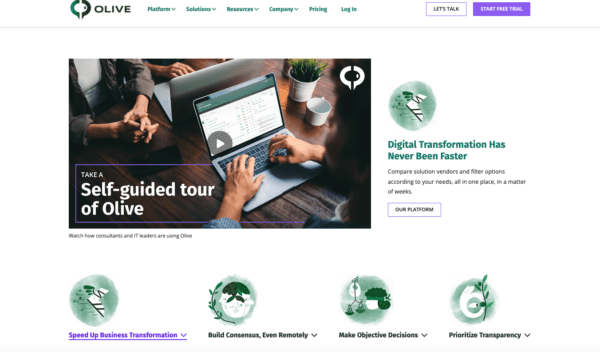Effective Requirements Management: The Key to Digital Transformation Success
Digital transformation success means introducing new technology to improve a company’s performance or creating processes that utilize existing technology to improve the customer experience. Digital transformation success metrics all have one thing in common; finding the right software solutions that satisfy the company’s requirements. Thus, digital transformation demands effective requirements management.
Choosing the right software by matching it to business requirements increases user adoption and organizational buy-in, which unlocks digital transformation success. Effective requirements management for software selection offers reliability and stability in a sea of unambiguity and overwhelm.
Let’s examine requirements management, the main stages, and how to leverage technology to streamline the requirements management process.
What is Requirements Management?
Requirements management is the process of gathering, analyzing, verifying, and validating the needs and requirements for the given product or system being developed. Requirements management provides a way to prevent mistakes and errors by tracking changes and enabling a consistent flow of communication with stakeholders from starting a project throughout the lifecycle. Traditionally, requirements are managed via documents, such as emails and spreadsheets. These days, requirements management tools offer a far more streamlined and efficient process.
What Are the 4 Stages of Requirements Management?
An effective Requirements Management process must involve all four Requirements Processes defined below: Elicitation, Validation, Specification, and Verification:
Elicitation
In this first step, the requirements are gathered. The process must involve all stakeholders in the elicitation phase to ensure all involved parties are on the same page. Several techniques for eliciting requirements include interviews, facilitated sessions, prototypes, questionnaires, etc.
Validation
The Validation step is essential for analyzing the next steps after elicitation. The purpose of validation is to accurately represent the needs and expectations of the clients and stakeholders, which includes: consolidating requirements, rationalizing them, looking at overlaps and gaps in findings, and visualizing the processes.
Specification
Throughout this step, the team must formally document the requirements in a Requirements Definition Report. Requirements are also numbered in a way that allows them to be tracked through the rest of the life cycle.
Verification
Verifying that the documented requirements accurately communicate needs and expectations is the last step in the process. The project leader then reviews and formally approves the requirements. The team can also develop acceptance criteria and start to write test cases for the final solution.
 Requirements Traceability Matrix in Olive
Requirements Traceability Matrix in OliveWhy is Requirements Management Important for Digital Transformation Projects?
Requirements management is important for digital transformation because finding the right software solutions that drive change starts and end with effective requirements management. Collaborating on requirements with key stakeholders and end users empowers teams to understand the why behind the change and confidently deliver on project needs and expectations. This ensures your company or client chooses technologies that drive digital transformation. Let’s take a look at some more requirements management benefits below:
Align with All Stakeholders
Becoming fully aligned helps identify errors and discover needs during the requirements phase. Full involvement and alignment also increase the likelihood of delivering a high-quality project.
Better Traceability and Due Diligence
Skipping over due diligence and going straight to only evaluating a few recommended solutions never ends well. Requirements management software can drive thorough due diligence and gain insights into how well a vendor meets the project’s specific needs without having to sift through excel spreadsheets. Instead of using scattered individual requirements documents, a centralized requirements management tool (like Olive) provides superior traceability.
Manage and Meet Expectations
The objective of requirements management is to increase the probability of delivering within the defined time frame. Using a robust requirements management solution that can help organize people working on shared, complex projects, stakeholder buy-in is built into the process, which helps manage and mitigate expectations.
Automate Your Requirements Management Process
You can easily streamline and automate your process by implementing the right requirements management software. For example, Olive comes with repeatable project templates, allowing you to preload with initial discovery questions, functional requirements, non-functional requirements, and surveys.
Are Requirements Management Tools Worth the Investment?
The right requirement management tools save you time, energy, and resources. Not to mention the opportunity cost of not finding the right solutions that drive digital transformation. In short: Effective requirements management is key to unlocking digital transformation success., so ensure you are using the latest solutions to automate the process and increase due diligence.
With Olive, you can gather, rank, and satisfy your requirements through a streamlined platform which greatly shortens the process of automating the tedious aspects, without sacrificing due diligence. See for yourself!





